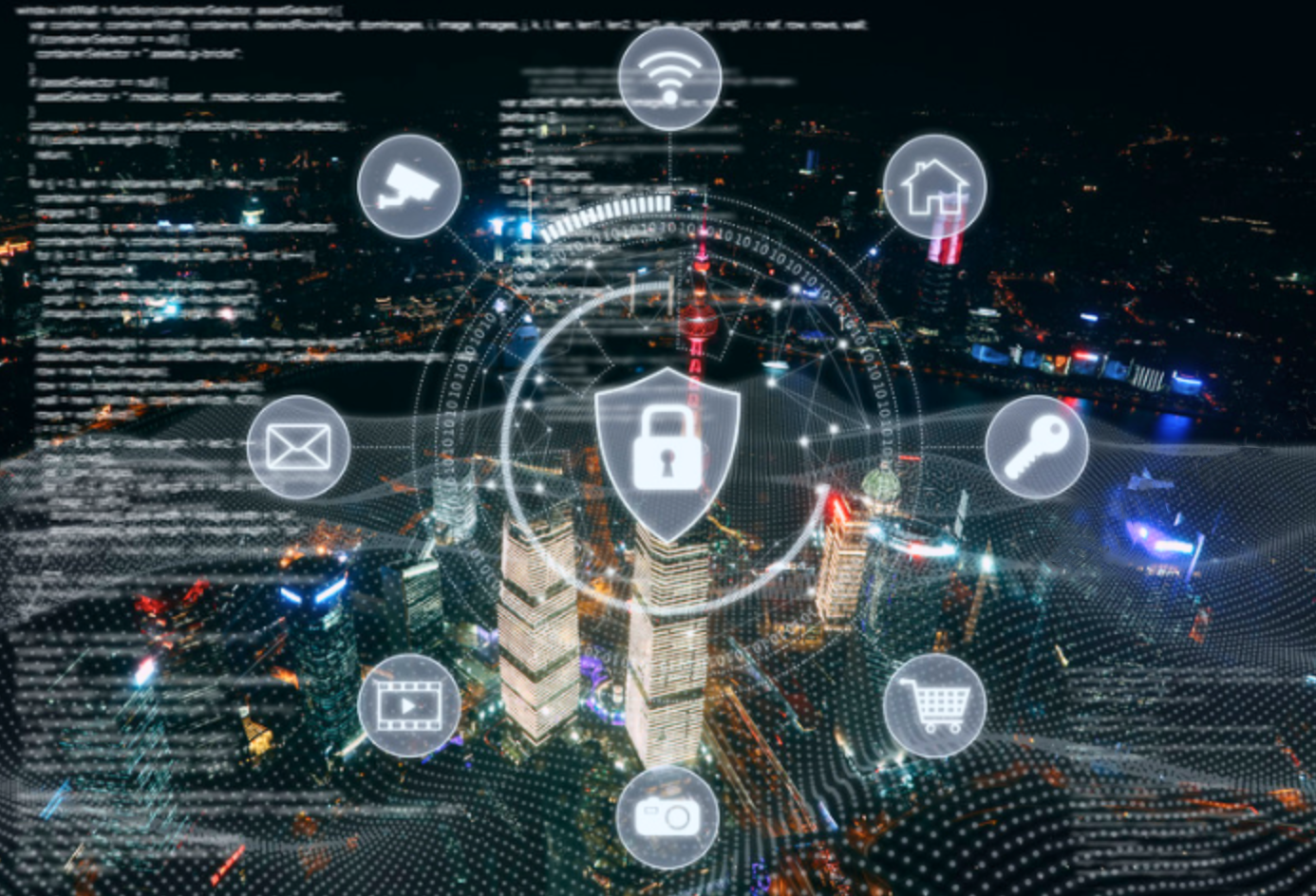[Blog] Top 5 Upcoming Trends in Facility Maintenance and Commercial Cleaning
The transformative power of the digital revolution is reshaping commercial and industrial facilities across the United States, Canada, and Mexico, sparking unprecedented developments in cleaning and maintenance.
"80% of facility management professionals believe technology is transforming the industry." - International Facility Management Association (IFMA) survey
The latest technological innovations power the change in how we clean and maintain our shared spaces. Since the pandemic, customers have raised the benchmarks for commercial hygiene, and keeping industrial spaces well-maintained has also never been more vital to accommodate a rise in e-commerce and manufacturing.
From IoT-enabled Smart Buildings and autonomous cleaning robots to hybrid working and Workloading methods, these five trends give facility managers and commercial cleaning businesses better ways to provide pristine and sanitized spaces. These advancements are not just trends; they are game-changers that will significantly benefit businesses by saving on resources, extending the life of infrastructure, and facilitating better customer and employee experiences.
"92% of customers consider cleanliness an important factor when deciding whether to be a repeat customer.” - Adam Camhi, ISSA
Discover the top five trends reshaping commercial cleaning and facility maintenance in 2025 that hone the competitive edge for Facility Management and commercial cleaning businesses.
1. Smart Buildings and IoT

In 2025, Smart Buildings and the Internet of Things (IoT) will continue to become more prolific across the US and the rest of North America. Smart Buildings are technologically advanced structures with interconnected sensors, data analytics, and automation that facilitate autonomous management of core systems, such as HVAC, lighting, and surveillance, regarding cleanliness, comfort, safety, and hygiene.
"Globally, 70% of facility managers have elevated digital transformation to a core strategic position. This isn't a fleeting trend but a tangible, pressing shift highlighting the sector's urgent need to upgrade and innovate." - Eric Whitley, IFMA
IoT sensors can track everything from air quality to foot traffic, allowing maintenance based on real-world needs for the Smart Building. This unified digital network optimizes energy efficiency, reduces waste, and elevates occupant and customer comfort through systemized cleaning.
In commercial cleaning, IoT and Smart Buildings promote automated cleaning robots that can monitor and adjust their cleaning patterns based on real-time data, thereby improving efficiency and reducing waste.
IoT is a game-changer in automated cleaning robots in complex facilities. It can save time and money by linking robots, like Pudu Robotics’ PUDU CC1, to the facility's elevator control software and e-gate entryways so the robot can handle multiple floors. IoT-equipped robots can monitor energy use, water and cleaning solution consumption, and maintenance frequency, increasing resource management efficiency and decreasing operating costs.
Going into 2025, broader adoption of IoT-enabled autonomous cleaning robots and Smart Buildings is anticipated due to decreased initial investment costs, increased cleaning efficiency and resource management, and high tenant and customer satisfaction demands.
2. Sustainability and Eco-Friendly Solutions

Sustainability is not just a trend but a core theme in facility management in 2025.
"By 2025, eco-friendly cleaning solutions will dominate the market, driven by growing consumer awareness, stricter environmental regulations, and businesses’ commitment to corporate social responsibility. Companies that fail to integrate sustainable practices risk being left behind." - Zakharchenko, Alyona, Samsic UK
In the big picture, companies are leaning toward eco-friendly construction practices due to recent developments in sustainable materials, waste management, and renewable energy that reduce environmental impact and costs. Energy management systems (EMS), paperless operations, efficient EV charging infrastructure, and cleaning automation will become essential for high-energy facilities like data centers and healthcare facilities to manage electricity use effectively.
Regarding automation, the healthcare and restaurant industries prefer autonomous cleaning robots with eco-friendly UV disinfection features to eliminate pathogens without chemicals. For floor-cleaning robots, cutting-edge path mapping software reduces water waste and redundant cleansing, making robots an eco-conscious choice for any commercial or industrial property.
Floor cleaning robots also reinforce safety using biodegradable and non-toxic cleansers, reducing environmental impact and toxin exposure to property occupants and custodial staff. Autonomous floor cleaning robots, like Pudu Robotics' PUDU MT1, operate in industrial spaces like warehouses and factories, clean hazardous areas that support worker safety, and operate in low light, cutting energy costs.
Automation like cleaning robots helps facility management companies achieve broader ecological goals across commercial and industrial spaces. Green construction standards, EMS, and automation are all integral to sustainable facility management, reshaping healthcare and commercial spaces for 2025.
3. AI and Predictive Analytics

"Asset-heavy industries, like restaurant and grocery, use predictive maintenance to keep operations running smoothly by reducing the impact of equipment downtime on store revenue, customer experience, and business brand." - Mapstead Admin Team, Mapstead advanced location technology provider
AI empowers facilities managers to anticipate property issues, fortify safety, and streamline operations for safer, more efficient environments. Facility managers gain real-time data on temperature, humidity, occupancy, and foot traffic, supporting reduced energy use and improved occupant comfort and hygiene.
Predictive analytics drives proactive maintenance, which assists in keeping facilities cleaner longer and can help operators foresee when a space may need extra attention far in advance. Predictive analytics with AI-powered automated methods and devices bolster cost-effective asset management and customer confidence by anticipating potential maintenance issues with proactive, not reactive, attention.
Automated devices like AI-powered cleaning robots like the PUDU MT1 are transforming facility management.
Equipped with the latest sensors, the PUDU MT1 autonomously detects and collects floor debris and then returns to charge. These robots help businesses cut costs by navigating independently and adapting to complex spaces, meeting the rising demand for efficient maintenance while alleviating labor shortages.
"Sixty-five percent of respondents say their organizations are regularly using gen AI in at least one business function, up from one-third last year."—Singla, Alex Singla, McKinsey & Company
With predictive analytics and AI driving facility management innovation, the industry can expect heightened efficiency, asset longevity, sustainability, and proactive service delivery. These developments set the stage for 2025 as a milestone year in data-driven facilities management.
4. Data Analytics and Cyber Security

As facility management and commercial cleaning become more data-driven in 2025, technologies like data analytics and cybersecurity are crucial for operational efficiency and risk management.
Data-driven hygiene strategies, compiled from AI-powered predictive analytics and IoT-connected devices, accelerate smarter, proactive maintenance and cleaning. Big data allows managers to use automated, precision-focused workflows based on real-time insights into cleaning patterns, equipment use, and occupancy. This transition optimizes resources, minimizes downtime, and streamlines maintenance.
Cybersecurity is equally essential since building automation systems can potentially make operational technology (OT) systems more vulnerable. With 27% of building managers reporting OT system cyberattacks, investing in cyber resilience is vital for business continuity and customer trust.
Integrating cutting-edge cybersecurity measures and investing in data-secure software and devices, such as cleaning robots, enables tech companies to prevent breaches, accelerate recovery times, and protect sensitive data from potential attacks that could compromise functionality.
Robotics manufacturers are now concentrating on delivering robust over-the-air software, security upgrades, and encryption updates to address privacy concerns, particularly as these robots become more interconnected.
"Expect to see regulations, protocols, and frameworks ensuring responsible data collection, usage, and anonymization—safeguarding individual privacy while harnessing the amazing power of data for a cleaner future." - Interclean
Pudu Robotics' open-platform architecture enables robust protection and seamless integration with other systems for their cleaning robots. Pudu Robotics' commitment to safeguarding data is paramount, with anonymized data collection practices and ISO/IEC certifications ensuring customer trust and compliance. Only essential technical support data is stored on PuduCloud, a secure AWS-hosted cloud, to enhance customer service and product performance.
Cyber resilience is essential for preserving user data and customer confidence in a secure tech landscape, and by merging data analytics with cybersecurity, the commercial cleaning industry can enhance efficiency, safety, comfort, and sustainability in 2025.
5. Hybrid Cleaning Methods and Workloading

Hybrid cleaning methods and workloading, driven by advanced technology and robotics, is our final trend and can bring unparalleled consistency in facility management in 2025.
Combining automation with human employees, Human-Robot Collaboration (HRC) addresses labor shortages and rising commercial and industrial cleaning costs. Cleaning robots can handle repetitive, labor-intensive tasks that may not be ergonomically comfortable, such as scrubbing floors or reaching low areas. Staff can then more thoroughly take care of high-contact and customer-facing areas, like restrooms, and do tasks requiring higher-level decision-making.
"Businesses are deploying cleaning robots to reduce labor costs, improve cleaning outcomes, and ensure consistent cleanliness in commercial spaces such as offices, hotels, and healthcare facilities." - The Niche Research Team
Autonomous robots like the PUDU CC1 aid custodial teams by efficiently cleaning four different floor types, resulting in safe, spotless surfaces and enhancing employee satisfaction by freeing them from taxing, vacuuming, sweeping, and mopping. HRC elevates cleanliness and underscores facility operational quality and customer satisfaction.
Workloading boosts productivity by letting managers precisely evaluate staffing and equipment needs and time-based on cleanable square footage.
Facility managers can use real-time occupancy data and Workloading assessments to adjust cleaning schedules and deployments, enabling flexible, automated prioritization of resources for high-traffic areas that align with evolving trends in hybrid workspaces.
"There’s an art to staffing and understanding what tools and equipment are needed to perform the work in the right amount of time." - Pedro Hoffmann, ISSA
This structured approach sets clear job expectations, reduces turnover, and fosters a positive workplace culture where employees understand their roles and feel valued. Workloading scheduling that deploys automated robots offers a reliable solution to maintain hygiene standards amid labor shortages. Organizations gain more substantial ROI and increase job satisfaction and retention by aligning resources with cleaning demands.
These technological innovations in hybrid cleaning and workloading empower facility managers to adapt to 2025 labor dynamics while meeting high cleanliness standards, positioning the industry for resilient, cost-effective growth.
Conclusion

As we head into 2025, digital transformation and sustainability are redefining facility maintenance and commercial cleaning through data and automation. Trends like IoT-enabled Smart Buildings, AI-driven analytics, and eco-friendly methods are reshaping how we clean and manage commercial spaces.
"As technology blazes across many industries, including Facility Management, disruption will be the new normal. Management will expect facility managers to be tech-savvy in order to capitalize on time- and cost-saving opportunities made possible with generative AI, business intelligence, and IoT." - Brian Prendergast, JLL/Technology
Adopting autonomous cleaning robots, integrated software, and sustainable practices will help facility managers achieve their ESG goals, boost cleaning efficiency, hasten ROI, and demonstrate their commitment to excellence to their customers. These innovations cut costs and create cleaner, safer spaces and greener environments.
These five trends provide businesses with a future-ready checklist to sharpen their competitive edge and polish their services for a prosperous future. Stay informed about how automation technology can help your facility maintenance with Pudu Robotics’ products and services here.
Works Cited
- Admin Team. “Top 5 Innovations Revolutionising Facilities Management and Commercial Cleaning in 2024 - Wessex Cleaning Equipment.” Wessex Cleaning Equipment, 10 July 2024, wessexcleaning.com/innovation/top-5-innovations-revolutionising-facilities-management-and-commercial-cleaning-in-2024/. Accessed 31 Oct. 2024.
- Álvarez, Ramiro. “7 Trends Defining Facility Management in 2024.” CleanLink, 29 July 2024, www.cleanlink.com/cleanlinkminute/details/7-Trends-Defining-Facility-Management-in-2024--64775. Accessed 31 Oct. 2024.
- Camhi, Adam, and Pedro Hoffmann. “The State of Today’s Cleaning Industry.” ISSA | the Worldwide Cleaning Organization, 29 Mar. 2022, www.issa.com/articles/the-state-of-todays-cleaning-industry/. Accessed 31 Oct. 2024.
- “Facilities Management Trends to Watch in 2024.” Mapsted, 7 Jan. 2024, mapsted.com/en-hk/blog/facilities-management-trends. Accessed 31 Oct. 2024.
- Interclean Team. “Shining a Light on Clean: 10 Trends in Professional Cleaning & Hygiene for 2024.” Interclean Show, 14 Jan. 2024, www.intercleanshow.com/news/innovation/10-trend-in-professional-cleaning-hygiene-for-2024. Accessed 31 Oct. 2024.
- James, Nathaniel. “Top 7 Trends in Cleaning Robots - Verified Market Reports.” Verified Market Reports, 10 Oct. 2024, www.verifiedmarketreports.com/blog/top-7-trends-in-cleaning-robots. Accessed 31 Oct. 2024.
- “Janitorial Robots: Ensuring Cleanliness amid Labor Challenges - Brain Corp.” BrainCorp, 13 Aug. 2024, www.braincorp.com/resources/janitorial-robots-ensuring-cleanliness-amid-labor-challenges. Accessed 31 Oct. 2024.
- Niche Research Team. “Global Cleaning Robot Market Is Expected to Grow at a CAGR of 22.7% over the Forecast Period (2024 – 2034).” Yahoo Finance, 4 July 2024, finance.yahoo.com/news/global-cleaning-robot-market-expected-170100792.html?guccounter=1&guce_referrer=aHR0cHM6Ly93d3cuZ29vZ2xlLmNvbS8&guce_referrer_sig=AQAAAIBvXVEKAHfcTokDsR2driVhMddSQ_1XKUNJ5jzdU43p4Rsb-M59UDZuJbkTCX5E7KWeWUbDI6lWn6ta2UuAeC5VEPQdYlCHeP5Evl6qcyzAvVP5nTyHjUlrZHt_eDsYsapjLvAWgpJyVhX76mvKq-O9wCnw3KNBkme-4e81DI88. Accessed 31 Oct. 2024.
- Precedence Research. “Cleaning Robot Market Size to Hit USD 48.45 Billion by 2034.” Precedence Research, 19 Sept. 2024, www.precedenceresearch.com/cleaning-robot-market. Accessed 31 Oct. 2024.
- Prendergast, Brian. “Facilities Management Trends to Watch in 2024 | JLLT.” JLL/Technologies, 17 Dec. 2023, www.jllt.com/blog/facilities-management-trends-to-watch-in-2024/. Accessed 31 Oct. 2024.
- Saha, Sudip. “Cleaning Robot Market.” Future Market Insights, 31 July 2023, www.futuremarketinsights.com/reports/cleaning-robot-market. Accessed 31 Oct. 2024.
- Singla, Alex, et al. “The State of AI in Early 2024: Gen AI Adoption Spikes and Starts to Generate Value | McKinsey.” McKinsey & Company, 30 May 2024, www.mckinsey.com/capabilities/quantumblack/our-insights/the-state-of-ai. Accessed 31 Oct. 2024.
- “U.S. Facility Management Market | Forecast Analysis [2030].” Fortune Business Insights, 14 Oct. 2023, www.fortunebusinessinsights.com/u-s-facility-management-market-107653. Accessed 31 Oct. 2024.
- “United States Facility Management Market Trends.” Mordor Intelligence, 30 Sept. 2024, www.mordorintelligence.com/industry-reports/united-states-facility-management-market/market-trends. Accessed 31 Oct. 2024.
- Whitley, Eric. “Digital Transformation in FM: Tools and Techniques for Effective Implementation.” IFMA, 6 Sept. 2023, blog.ifma.org/digital-transformation-in-fm-tools-and-techniques-for-effective-implementation. Accessed 31 Oct. 2024.
- Williams, Lauren. “6 Facility Management Trends to Watch in 2024.” Vector Solutions, 23 Feb. 2024, www.vectorsolutions.com/resources/blogs/facility-management-trends/. Accessed 31 Oct. 2024.
- Zakharchenko, Alyona. “Emerging Commercial Cleaning Trends for 2025: The Future of Clean.” Samsic UK, 15 Oct. 2024, www.samsic.uk/blog/commercial-cleaning-trends/. Accessed 31 Oct. 2024.